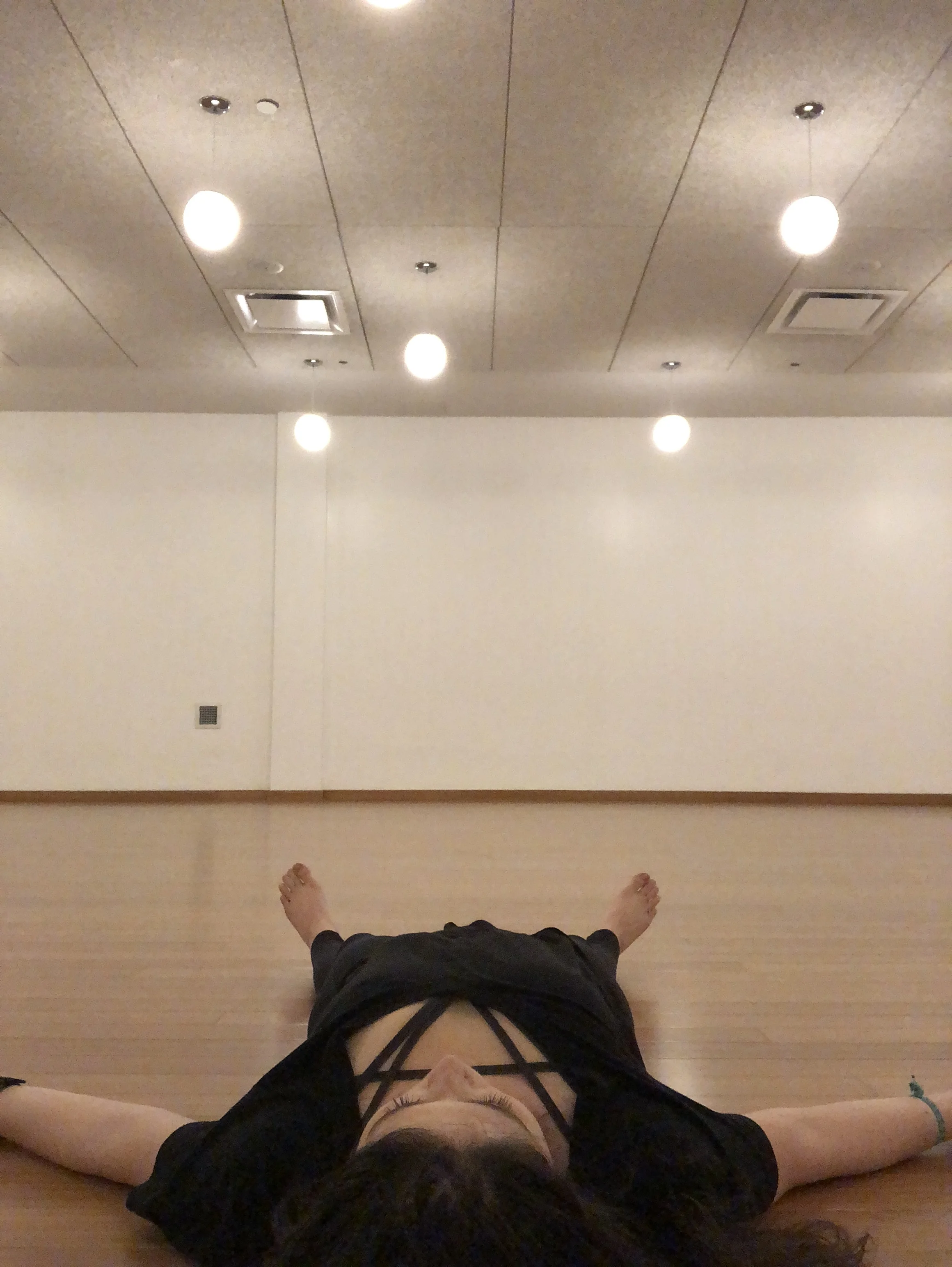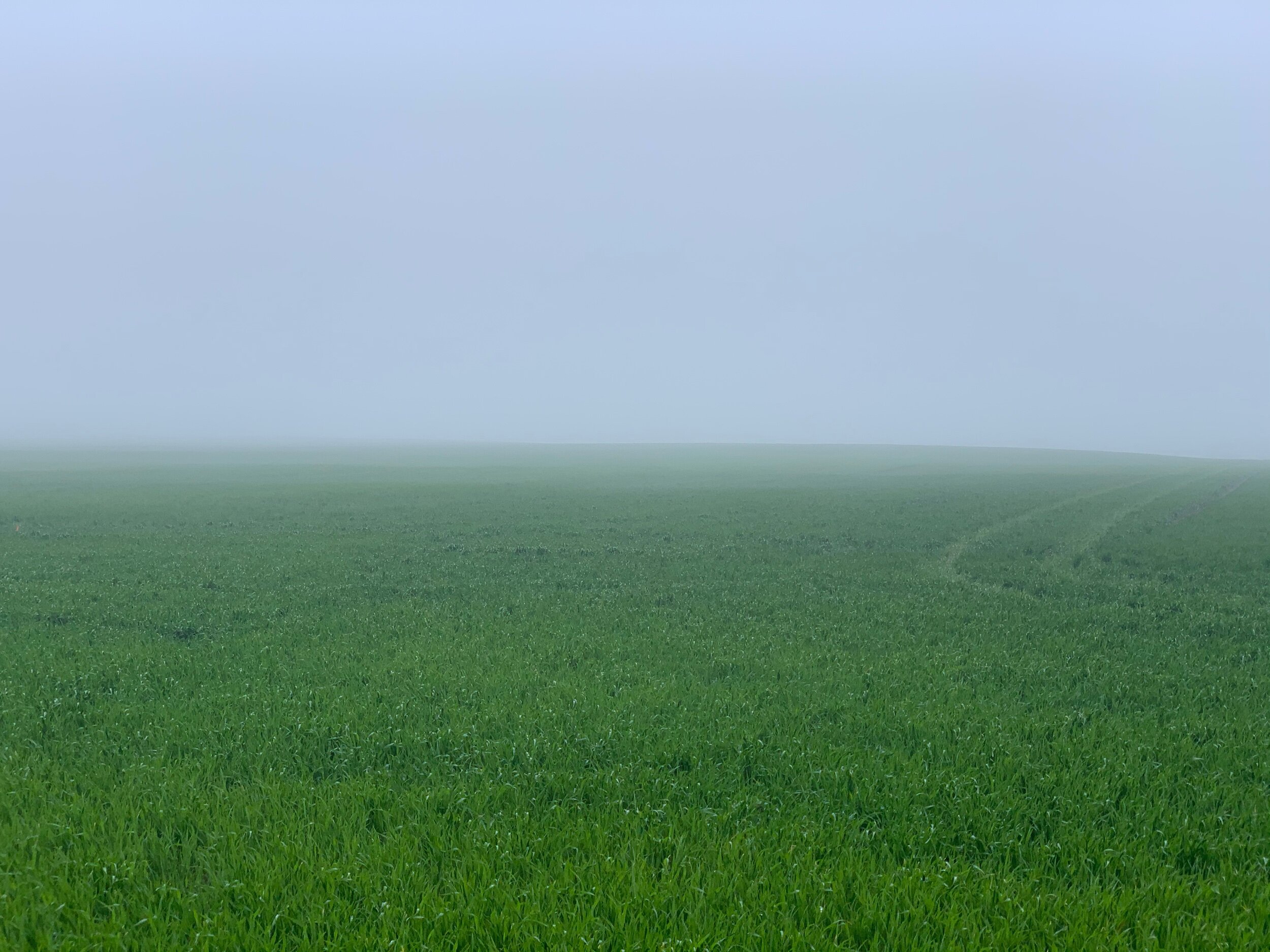Recently after a discussion regarding intellectual property, someone mentioned that yoga, being thousands of years old, is in the public domain. As the prevalence of meditation apps, trademarked “mindfulness” programs, and other corporately driven initiatives grows, so does my mixed feelings on the way we value the work of our yoga teachers, both ancient and currently living, and what impacts that will have on the future of yoga - and our individual paths.
After years in the music industry, along with time spent in roles as an advocate for the arts, I have a good understanding of the way that commerce (or capitalism) works when it comes to intellectual property and copyright law (although I hold no professional designation as a lawyer, just experience working with and for a lot of folks with intellectual property rights).
Pre-covid I recall having conversations about instructors lifting sequences from other teachers, using delivery methods, cues and sayings without mentioning or crediting the person where they drew the inspiration from.
I had a bunch of different thoughts when hearing these conversations (all of which I will revisit and revise later):
“Yoga is in the public domain”
“The teachings are the teachings, they all come from the same source” (oh so problematic!)
“Why would I need credit? My ego is not who I am.” (yeah thinking is a weird thing sometimes)
Although yoga is within the public domain, a certain high profile hot yoga teacher tried to get his sequence copyrighted which the courts deemed not possible to copyright - however they did find that “You can’t copyright an idea, but you can copyright the expression of that idea.” - meaning the words, images etc… (source is linked).
That last thought really got me thinking...
When COVID-19 made group activities including yoga a digitally rendered service (for the most part) the presence of digitally administered “mindfulness” seemed to be inescapable. At first glance you might think “How else am I going to practice if studios are closed - don’t you think it’s great that apps are offering mindfulness and meditation to folks no matter where they are.” Looking only at the surface this seems like an amazing innovation, especially when apps are free (or a combination of free and paid) but in my opinion there is an underlying cost - and it comes at the expense of the teacher. The teacher is the one creating the words and images that I (again - not a lawyer) would argue IS likely copyrightable.
“But isn’t yoga a spiritual practice disinterested in material wealth?”
“But aren’t yoga teachers traditionally teaching yoga for free? Don’t real yoga teachers go unpaid”
“But on the spiritual path, aren’t we aiming to let go of our need for acknowledgement?”
If you said those things I think you would be correct - but the reality remains that where I teach, where the revenue of apps go to, are capitalist societies that do not support the traditional ways of teaching (or practicing) that are founded on a donations based infrastructure established by the surrounding community. Teachers are only able to clothe, shelter and feed themselves from the money that comes from their teaching (and in most cases this isn’t even enough to support them outright. Most teachers are able to support them or they have jobs that take care of their basic needs because it’s the only way they’re able to teach and meet their needs - myself included). (Source Linked)
A free meditation website came to my attention via an influx of supportive students asking me to add my voice to their app based library of meditations. I had some work pre-recorded so I went to the app to see what the deal was (ever aware of my prior experiences as a musician with IP rights…) I was shocked when the app declared the “non-exclusive right to use and make derivative works without credit or payment in perpetuity”. Basically, give us your work and we’ll take it, do what we like with it and you get “exposure” (not entirely sure how that works given that in-theory they can make derivatives without compensation but I digress…). Nevermind that part of being a teacher is being a perpetual student… something you’re required to pay for to access training and teachers in the system of capitalism. Nevermind that you’ve paid for equipment to allow you to record yourself (whether it’s a phone or a computer - it requires a healthy dose of financial privilege to be able to afford these tools). Not to mention the app decides in this instance that it deserves to get paid for that content but not the person that made it.
“freely giving it to a company to use it for what it wants to make money… an aim not on the spiritual path… just doesn’t sit right with me”
Also… yoga isn’t really ours to give to these corporations. I’m not of the culture of yoga - this practice came from people of colour, it’s a major part of a culture that still exists to this day. So freely giving it to a company to use it for what it wants to make money… an aim not on the spiritual path… just doesn’t sit right with me (but I’m not saying that’s reason enough to agree with me - you have your own reasons).
They say imitation is the sincerest form of flattery but I’m reluctant to apply this to the current climate of yoga.
I couldn’t help but come back to that question “Why would I need credit? My ego is not who I am.” For me at least, I think likely if you don’t get credit, someone else will.
“leaving room for folks to take credit - and therefore control - the resources and the practice itself is a potential impact I think is good to be aware of.”
As a younger teacher I didn’t totally understand this. I taught concepts that I learned without referencing the source, I drew inspiration without necessarily pointing to where it came from. This is not only racist when it comes to profiting from the labour of IBPOC, but leaving room for folks to take credit - and therefore control - the resources and the practice itself is a potential impact I think is good to be aware of.
Maybe this is my own 2020 echo chamber - but in noticing the monetization of an industry (again industry applying to a spiritual tradition is just super weird) worth in excess of $85 Billion and looking around at local establishments and independent teachers like myself talk openly about the financial hardships they endure, I wonder how this fiscal pressure edits yoga down into what sells versus what it is - a multigenerational spiritual tradition that has a physical component.
More plainly - this lack of credit is a form of plagiarism. In the case of the apps, this plagiarism is at least in theory consented to (depending on whether or not you read the fine print before uploading…). If teachers are mimicking without crediting or citing, without reflecting or considering (as I once did), in a society in the midst of a raised awareness of how implicit bias oppresses many so few may flourish I wonder if this commonplace practice of not crediting benefits mostly teachers of privilege able to navigate an industry.
Asteya or non-stealing is part of the Yamas, a set of ethical principles that are on the yogic path from Patanjali’s Yoga Sutras. As yoga is a path to liberation from suffering, the sutras say
33. When the idea of stealing comes, non-stealing should be thought of.
In the case of not crediting, not paying for, not giving back to -- aren’t we also not being truthful (Satya, a Niyama - or virtue meaning Truthfulness from the same scripture)? Aren’t we also allowing the illusion that you did it yourself to persist? What i’ve noticed is with repetition your ego starts to believe that what’s not yours actually is.
In line with the verse above, what if when we’re inspired to take someone’s influence into our work, why not practice giving back to that person? Why don’t we foster our own community by giving back to it?
Why not give credit, payment, support etc… ?
Why not remind our egos of their place? (even when we DO get credit we are caretakers and guides — not owners of yoga)
Why not support another teacher’s teaching if they’re inspiring you?
Myself, I realize that my fears of “not being enough” clouded the issue, my willingness to further suffering by not getting or giving credit or pay to folks who have influenced me. Regardless of what your answers are, it’s good to examine and reflect on why you do or don’t do things when it comes to your practice on and off the mat.
So if you’re not giving credit, pay, or support to the folks who support your teaching, ask yourself why and see what comes up.
(Please don’t substitute my opinions for your own. My own opinions and teachings evolve over time as I also learn, unlearn and grow. I offer this as critical thought but I do ask if you are inspired by me and get paid to be - give me a shout out, k?).







